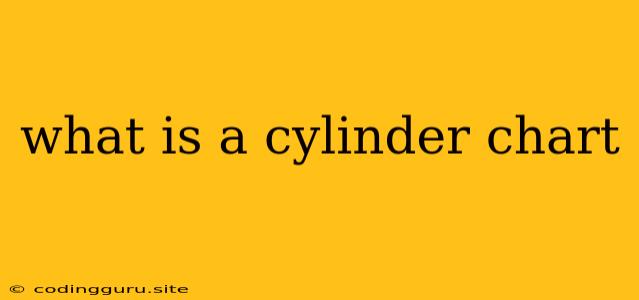What is a Cylinder Chart?
A cylinder chart, also known as a 3D column chart or a cylinder chart, is a type of chart used to visualize data in a three-dimensional format. It presents data in the form of cylinders, with the height of each cylinder representing the value of a particular data point.
Why Use a Cylinder Chart?
Cylinder charts offer several advantages over traditional 2D charts:
- Visual Appeal: The three-dimensional nature of the chart can make it more visually appealing and engaging for viewers.
- Enhanced Depth: The cylinder shape allows for the representation of data points in a way that adds depth and dimension to the visualization.
- Data Comparisons: Cylinder charts are effective for comparing data across different categories or groups. The height of each cylinder provides a clear visual representation of the relative values.
How to Create a Cylinder Chart
You can create cylinder charts using various data visualization software and tools. Here are some popular options:
- Microsoft Excel: Excel allows you to create cylinder charts using the built-in 3D chart options.
- Google Sheets: Google Sheets also offers the capability to create cylinder charts, providing similar features to Excel.
- Data Visualization Libraries: Several libraries in programming languages like Python (Matplotlib, Seaborn), R (ggplot2), and JavaScript (D3.js) allow for creating interactive and customized cylinder charts.
Applications of Cylinder Charts
Cylinder charts are used in various fields and applications, including:
- Business Analytics: Representing sales figures, market share, or financial performance.
- Scientific Research: Visualizing experimental data, trends, and relationships.
- Education: Teaching data visualization principles and illustrating data patterns.
- Marketing: Presenting product sales, customer demographics, or campaign performance.
Considerations When Using Cylinder Charts
While cylinder charts can be visually appealing, it's important to consider some potential drawbacks:
- Data Distortion: The perspective in a 3D chart can sometimes distort the perception of data values, leading to misinterpretations.
- Complexity: Too many cylinders or complex data arrangements can make the chart difficult to understand.
- Accessibility: Individuals with visual impairments may find it challenging to interpret 3D charts effectively.
Conclusion
Cylinder charts are a powerful tool for visually representing data in a three-dimensional format. They can enhance data comprehension and provide a more engaging presentation compared to traditional 2D charts. However, it's essential to use cylinder charts thoughtfully and avoid potential pitfalls related to data distortion and complexity. Always strive for clarity and accuracy in data visualization, ensuring that the chosen chart type effectively communicates the intended insights.
